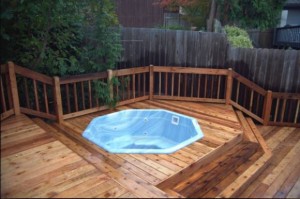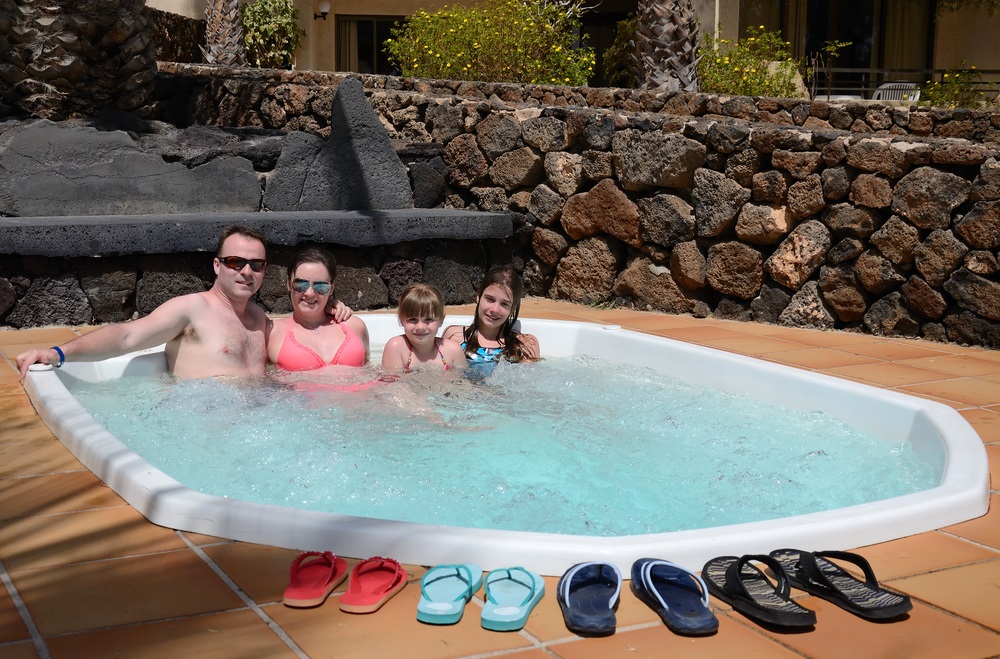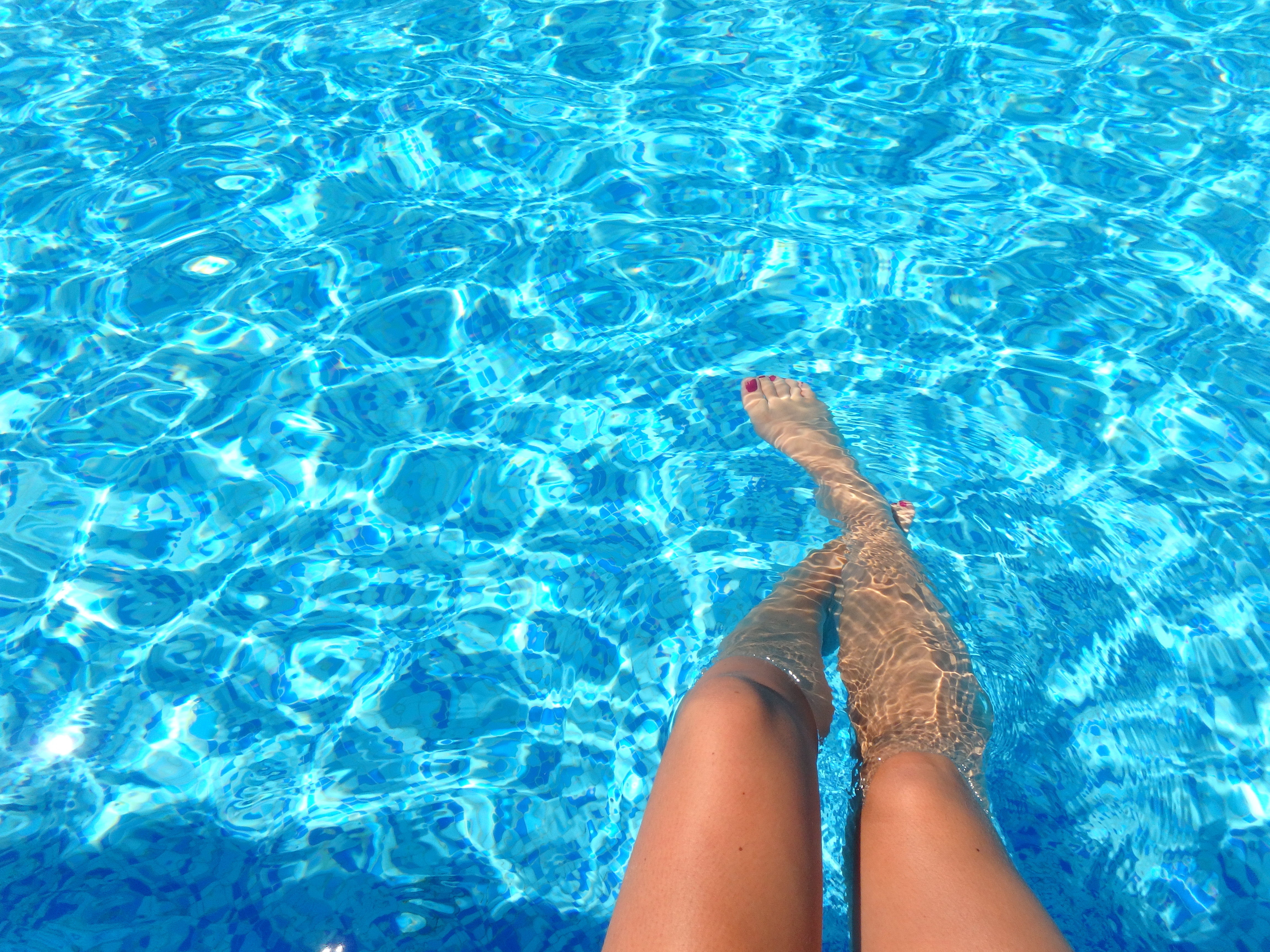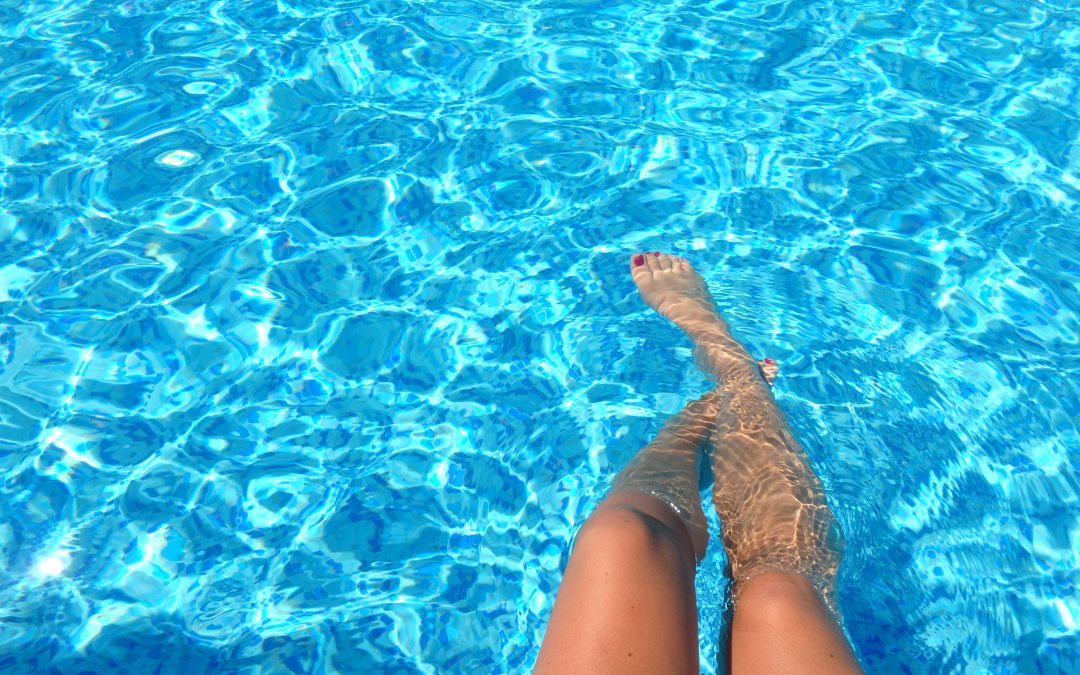Swimming pool and hot tub contractors know that soaking in a hot tub is something that their customers enjoy year-round. The heated, jetted waters are more welcoming on a cool winter day or night than they usually are in the heat of a summer day.
Think back to the first time you slid into the heated waters of your new hot tub. Chances are, you never wanted to get out! A soak in a hot tub or spa brings about a sense of calm, stress floats away on the steam and you can relax from the busyness of your day. Add a few sips of wine and the relaxing scents of lavender from a diffuser and you can see why people crave their hot tub time!
Over time, though your hot tub will need to be cleaned. The water won’t seem quite as inviting. Even though you can’t see any dirt or debris in the water you just know it’s there, lurking with the potential to make you ill. Sounds like you need to have your hot tub water cleaned and serviced, doesn’t it?
Keep Your Hot Tub Water Safe & ‘Soak-able’
You can certainly clean the hot tub water yourself. The manual that came with the hot tub will offer guidance as will hopping on YouTube for tutorials. Honestly, though, in your limited free time, do you really want to be cleaning and maintaining your hot tub? Don’t you just want to come home from work or from a day of chasing the children around and just use the hot tub, not spend your precious free time cleaning it?
 Heated water leads to bacteria growth
Heated water leads to bacteria growth
The smaller size of the hot tub and its volume of water, coupled with the heat of the water both lead to faster growth of potentially disease-carrying bacteria. Compare this:
- Swimming pool water temperatures are typically between 82 and 84 degrees fahrenheit.
- Spa and hot tub water is typically between 102 and 104 degrees fahrenheit.
The warm water in the hot tub helps you relax and unwind, and it is also an ideal growing space for fungi, algae and bacteria. Yuck! If the water goes unchecked and untreated you could suffer infections and skin rashes.
How to balance hot tub water chemicals
The heat, the smaller volume of water and the potential for bacteria growth shows the many reasons that caring for a hot tub is different than caring for your swimming pool water.
The size and volume of water in the hot tub is what makes the chemical balancing challenging. The frequency with which you clean the hot tub, add chemicals and use it factor in to the chemical soup you need to use to keep the water bacteria-free and soak-able.
 Factors that impact spa water chemistry
Factors that impact spa water chemistry
- Sanitizer. The sanitizer — chlorine — used to disinfect the water in your spa is tricky. Too much and you will suffer dry skin and eye irritation. Too little and the spa water will become a breeding ground for harmful microorganisms.
The most common sanitizers are chlorine and bromine. The readings for chlorine, which you can find on the water test kit and strips you use, should be between 1.5 and 3.0 PPM. The averages for bromine is between 3.0 and 5.0 PPM.
NOTE: When checking the sanitizer, it’s important to wait for a few minutes before testing the spa water after you’ve added the chemicals. The reason for this is you need to allow time for the sanitizer to mix in with your spa water, and you will get a more accurate reading.
- Total alkalinity and pH levels. These go hand-in-hand and directly impact one another and their effectiveness in keeping the water chemistry in balance. Alkalinity is the amount of alkaline components in your spa water. pH levels measure whether the water is acidic or basic. The higher the pH levels, the more alkaline the water.
Check these levels with test strips. Spa water should have a pH level between 7.2 and 7.8. If the water’s pH level is lower than this your spa water is too acidic; this can lead to skin and eye irritations and can corrode the spa equipment. If the spa water pH level is too high, there is too much alkaline in it. This leads to the spa water being cloudy and makes it harder for the spa filter to do its job.
To make certain the spa water pH level is within acceptable ranges to ensure its total alkalinity level is between 80 and 120 PPM.
- Calcium Hardness. Tap water, if that’s what you use to fill your hot tub impacts the water chemistry.
 There are regions in the country where tap water is classified as “hard.” This means that the water coming from the tap contains high levels of calcium, magnesium and iron. If you use tap water you may notice the formation of scales on teh surface of your spa and the spa water turns cloudy.
There are regions in the country where tap water is classified as “hard.” This means that the water coming from the tap contains high levels of calcium, magnesium and iron. If you use tap water you may notice the formation of scales on teh surface of your spa and the spa water turns cloudy.
Ideal calcium ranges for the water should be between 100 and 250PPM if your spa has an acrylic finish, and 250 and 450PPM for a plaster-finished spa. If the calcium is higher than the ideal ranges, you will need to use a water softener.
- Shock treatment. When you “shock” the water, you’re super-chlorinating it by adding copious amounts of chlorine into the water to kill off any bacteria and high levels of other chemicals. Shocking the water breaks down organic and other materials that build up in the water (they build up even if you’re diligent in adding chemicals to it). These materials include: dirt, soap films, hair spray, lotion, oils, perspiration dead skin cells and other organic matter. If you don’t shock the water, these organic materials become “food” for bacteria and algae spores.
When you shock the spa water, you need to keep it uncovered for at least twenty minutes to allow the fumes to escape.
Bottom line: There are those individuals who will take on the challenge of keeping both pool and spa water clean and free of bacteria. There are others who simply want to enjoy the water when they have the free time and leave the chemical balancing up to the expertise of swimming pool and spa contractors.
Will you be using your hot tub year-round? Will you clean it yourself?

